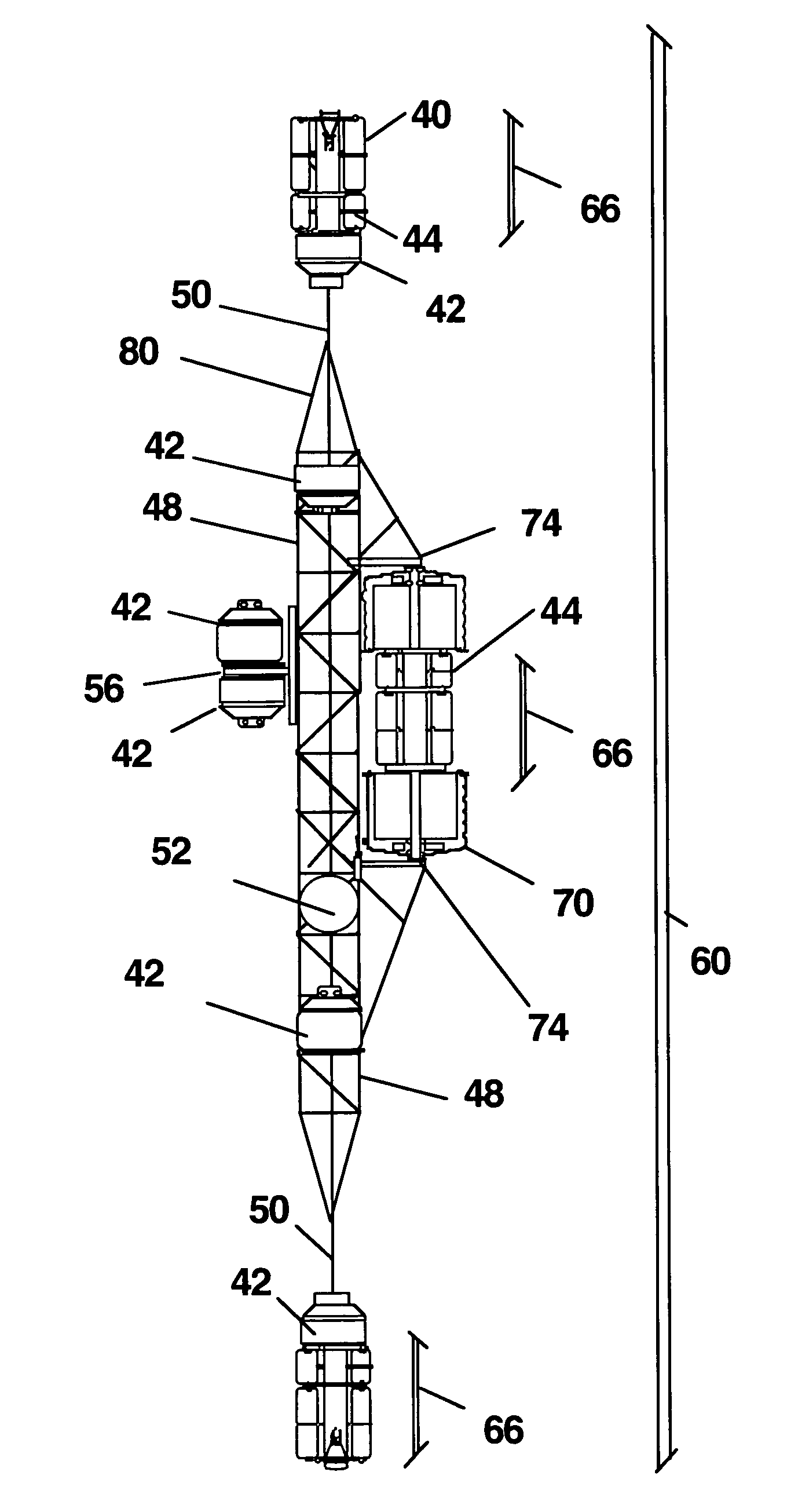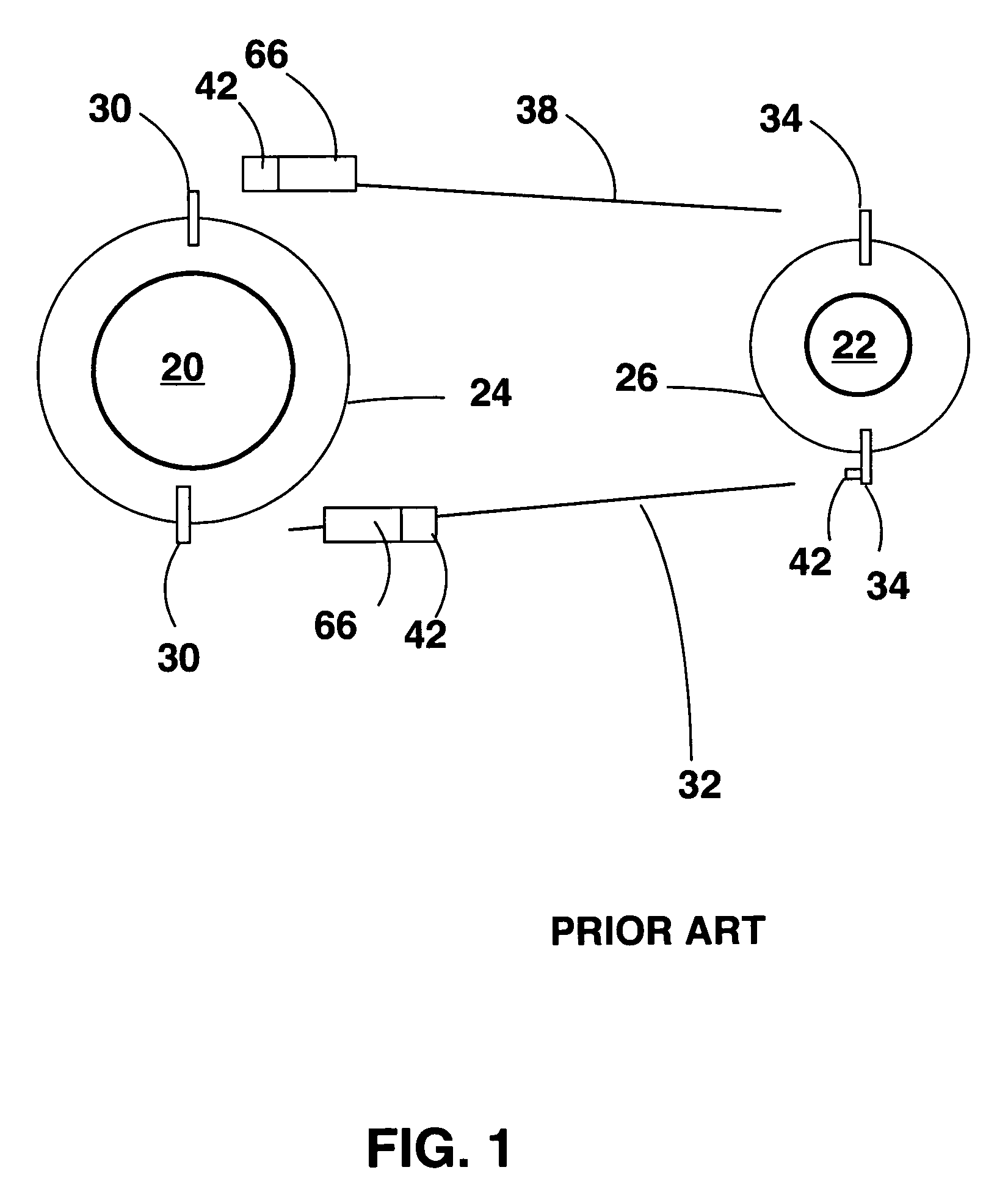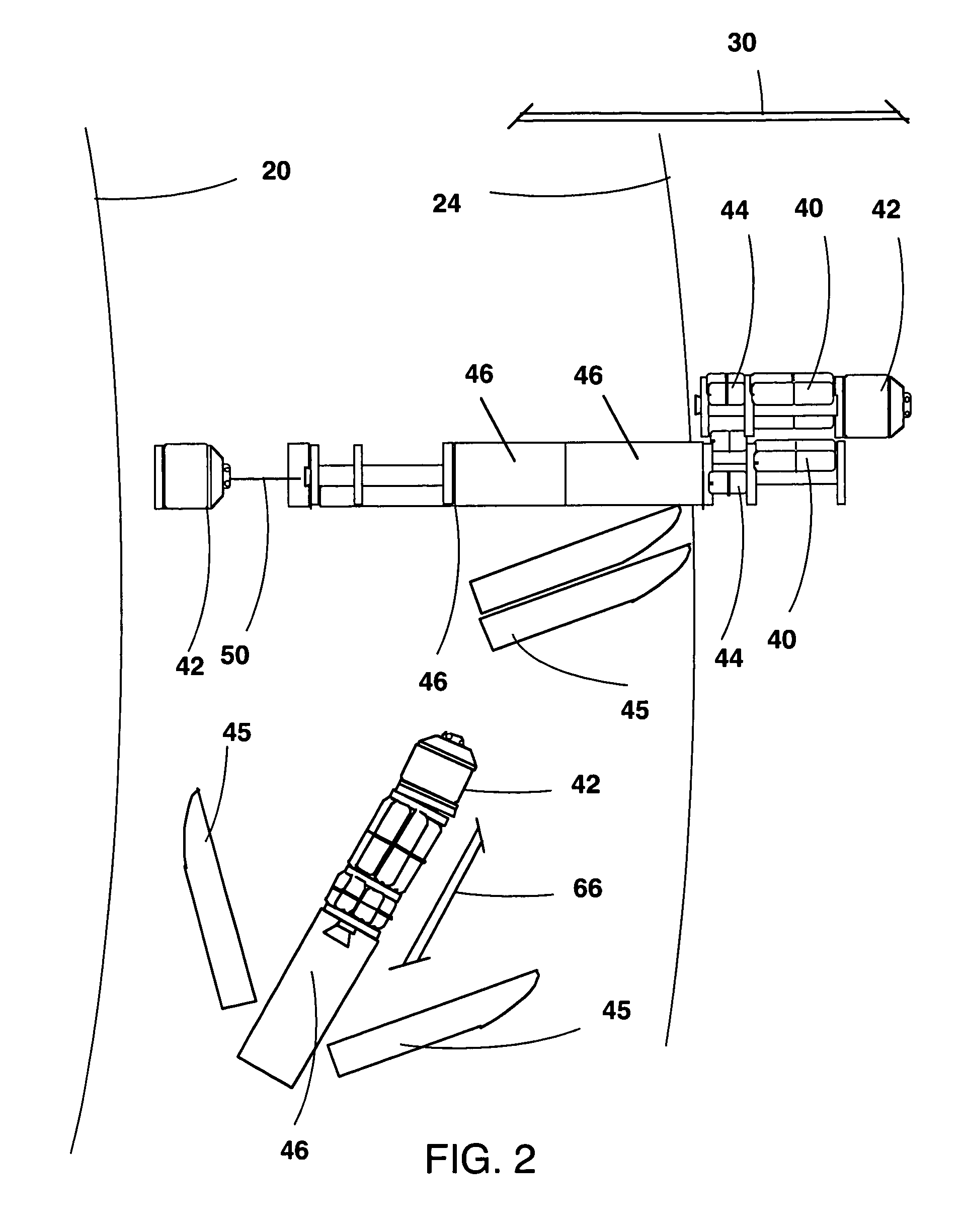Space transportation node including tether system
a node and space technology, applied in the field of space transportation, can solve the problems of one-shot apollo missions, high cost, and inconvenient transportation, and achieve the effects of reducing cost, stimulating commerce, and enhancing transportation process
- Summary
- Abstract
- Description
- Claims
- Application Information
AI Technical Summary
Benefits of technology
Problems solved by technology
Method used
Image
Examples
Embodiment Construction
[0079]Embodiments of the present invention will be described below with reference to the drawings.
[0080]U.S. patent application Ser. No. 10 / 862,604, which was filed by the current inventors on Jun. 7, 2004, is incorporated by reference herein in its entirety. Such application discloses a space transportation system including small, unmanned vehicles that transfer fuel tanks and payloads in Earth orbit, to allow for further transport to a lunar orbit or to the surface of the moon. The application describes a method for greatly increasing the range of relatively small unmanned space vehicles by providing mobile refueling platforms or transportation nodes in space. These mobile platforms, also known as propellant transporters, can rendezvous and dock with space vehicles traveling to the moon, for example, and replenish their depleted propellant reserves. The present disclosure includes equipment to transfer payloads between two space platforms or vehicles, and describes a reliable proc...
PUM
 Login to View More
Login to View More Abstract
Description
Claims
Application Information
 Login to View More
Login to View More - R&D
- Intellectual Property
- Life Sciences
- Materials
- Tech Scout
- Unparalleled Data Quality
- Higher Quality Content
- 60% Fewer Hallucinations
Browse by: Latest US Patents, China's latest patents, Technical Efficacy Thesaurus, Application Domain, Technology Topic, Popular Technical Reports.
© 2025 PatSnap. All rights reserved.Legal|Privacy policy|Modern Slavery Act Transparency Statement|Sitemap|About US| Contact US: help@patsnap.com



